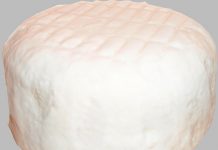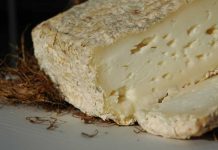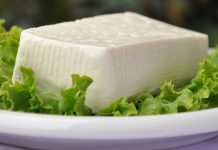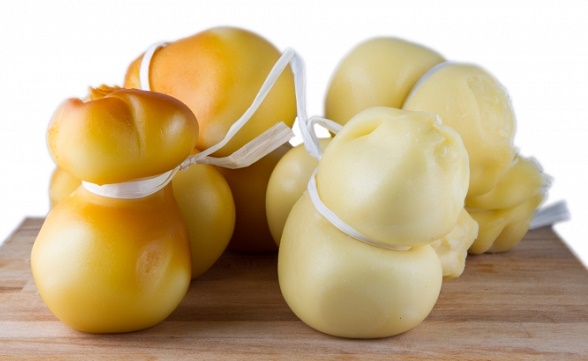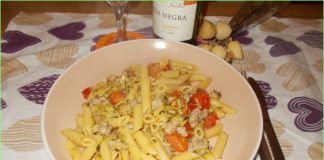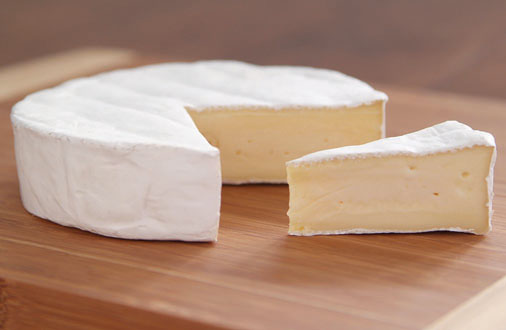
Introduction
Brie is a milk origin food, which presents a very clear and mold rind. Its origins are French, and is produced in the valley from which it takes its name, located about 50 kilometers from the capital, in the east. We are talking about a soft cheese, which is to mature for a short period and is obtained by processing cow’s milk. The mold of this food, it is a particular mold that belongs to the genus “Penicillium“, the same as the Camembert cheese.
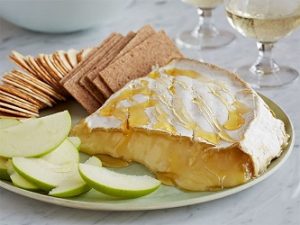
There are commercially available various types of Brie, but really only two types make use of the protected mark of origin and these are: Brie de Meraux and Brie de Melun. The first mentioned, is the best known, and has a particularly delicate taste, while the other, has a stronger aftertaste that could be called more determined. According to some research, it was concluded that the Brie cheese, was born at the Abbey of Notre-Dame de Jouarre, in the 11th century AD.
As regards the nutritional aspect of this cheese, Brie is considered as a semi-fat, in fact possesses 27% of lipids. Is a food not quite thin, quite caloric, especially because it is rich in triglycerides and proteins.
If we talk of Brie from a taste point of view, you should know, that this dairy product, only in the summer months and early autumn, is at its maximum. Aesthetically, the Brie presents a circular shape of diameter of about 35 centimeters and thick about 2.5 centimeters, and can reach a maximum of 4 cm. On the external side, it has a white mold film, with an approximate mass varying from 0.5 up to reach 2 pounds for each wheel.
This cheese, as well as others in classic type bloomy rind, especially those that are realized by the processing of raw milk, has a centripetal trend as regards its ripening. In fact tends to ripen more quickly in the central part, than the outside, conferring in this way, a very particular stratigraphic aspect, namely, a dark undercrust, very creamy from pale yellow color, and a central part, of white color, but with a more solid consistency. The paste turns out to be greasy and this peculiarity, gives a special flavor to Brie.

This cheese is obtained from raw cow’s milk and today very often, during the process for the realization, it tends to pasteurize the liquid. The ripening period of the Brie, ranging from 20 to 30 days and takes place in very wet places. In ancient times it was often used of straw holders, so as to encourage the development of white felt on the outside.
Brie of nutritional values
The Brie contains about 48-49% water, while fats can also achieve a percentage equal to 27% and the proteins are present for 20% and the remaining 4% are mineral salts. This cheese is a very useful food for our body, but at the same time has not exactly healthful aspects especially for those suffering from diseases. Like all cheeses, also the Brie, possesses significant amounts of biological value proteins, such as phosphorus, calcium, vitamin A, and riboflavin, or vitamin B2.
The caloric density and lipid present, prohibits excessive consumption especially in case of overweight. Although cholesterol is an aspect not to be overlooked and it is reasonable to think that the breakdown of fatty acids, both in favor of saturated fat. As just said, makes the Brie cheese, a food is unsuitable for the diet against hypercholesterolemia. Being rich in calcium and phosphorus, Brie is especially designed for the current of subjects in growth and also for people in old age. One last note, but certainly not least, regards the abundant presence of added sodium. Being an element to be reckoned with, and very unfavorable for patients with high blood pressure, its intake should be done moderately and not more than twice a week.

Culinary aspects
Brie cheese, being a semi-fresh dairy product, has very short storage times, in fact, it need to be placed in the refrigerator and eaten within a few days. If we speak of this food from the gastronomic point of view, we can recommend the culinary uses for the realization of many recipes. Often this cheese is tasted in its own right with red wine pairings with a fruity aftertaste, but also with red full-bodied flavor, such as Burgundy or Bordeaux. You can propose this cheese as a delicious appetizer served with other meats and honey, or serve time in the table above crispy golden croutons. The Brie cheese, can also be used for the realization of tasty rice dishes.

